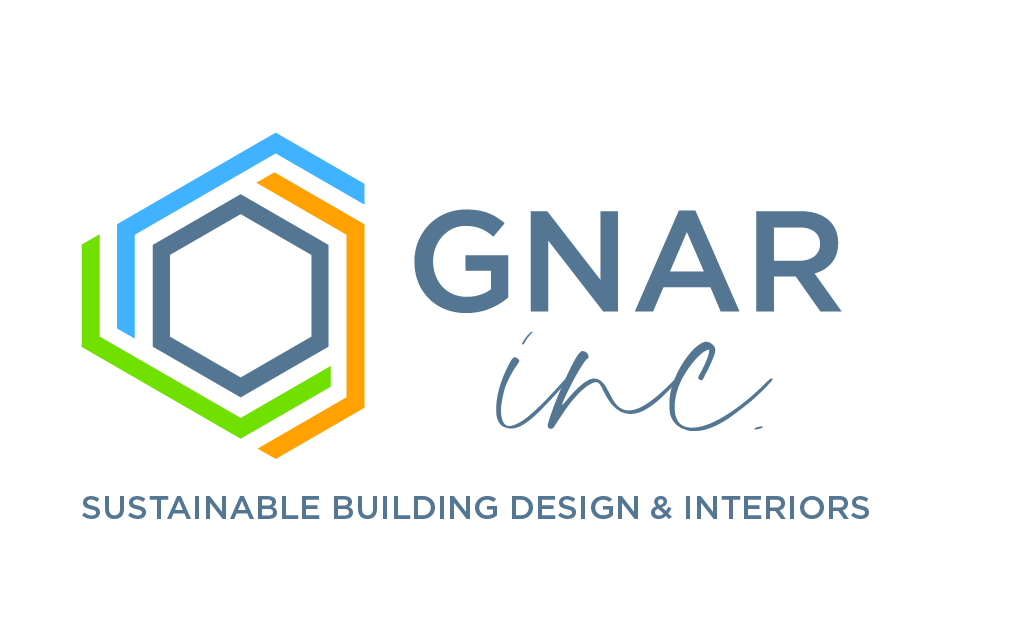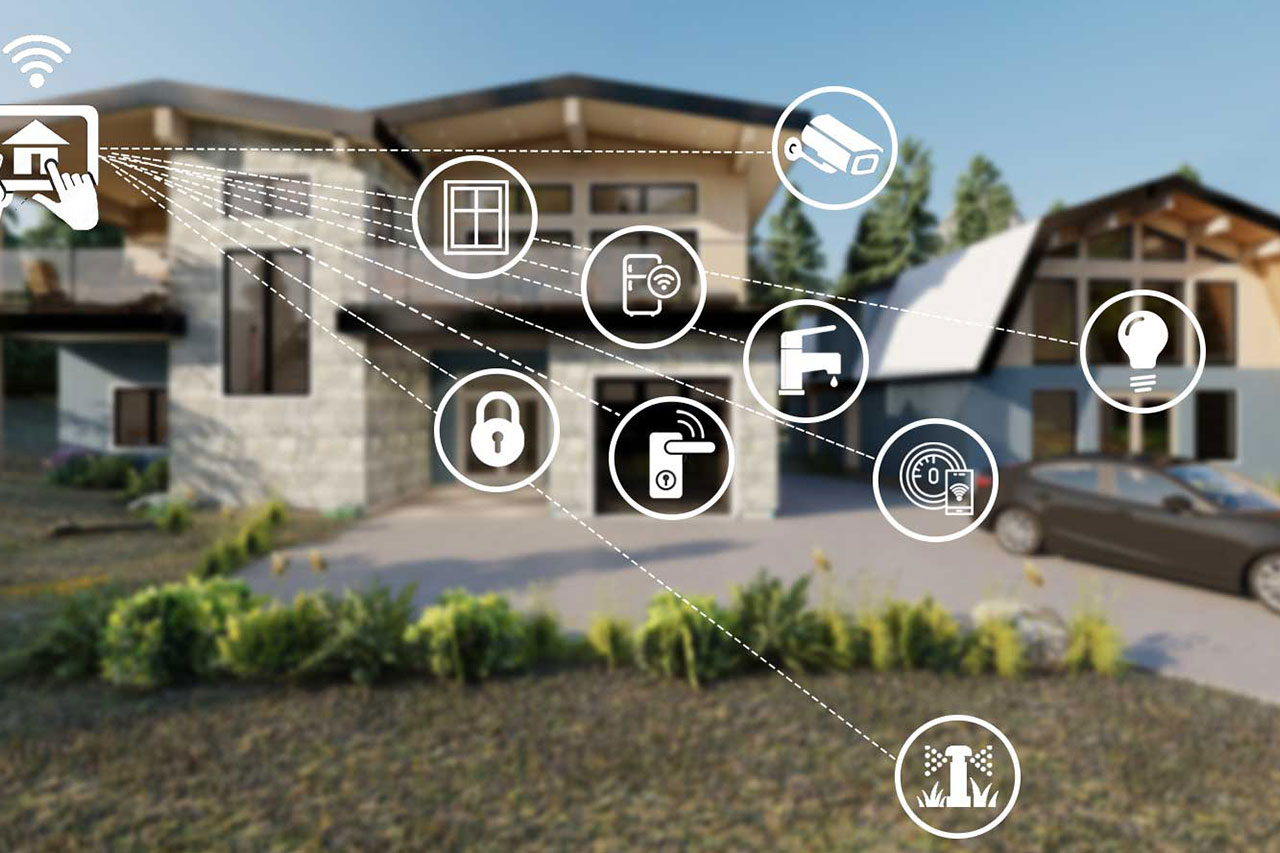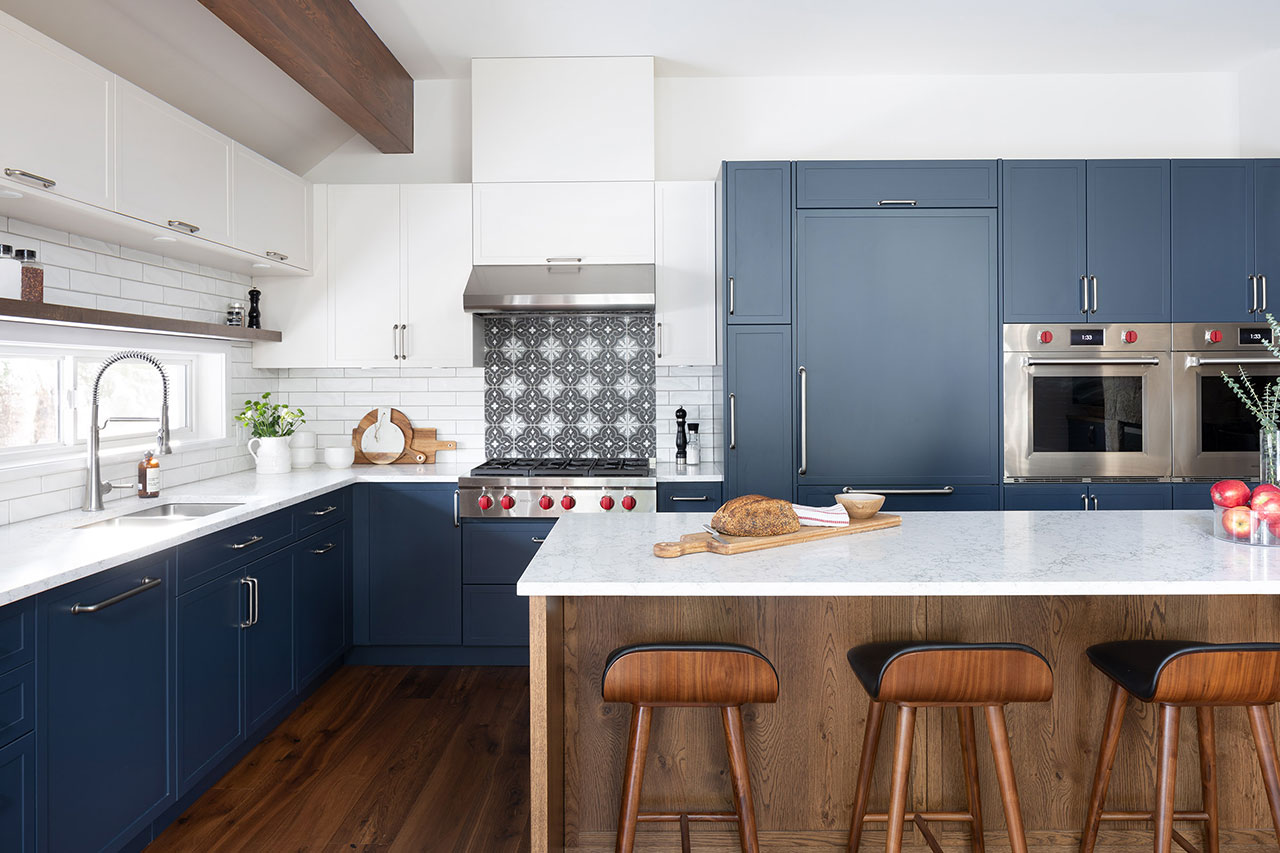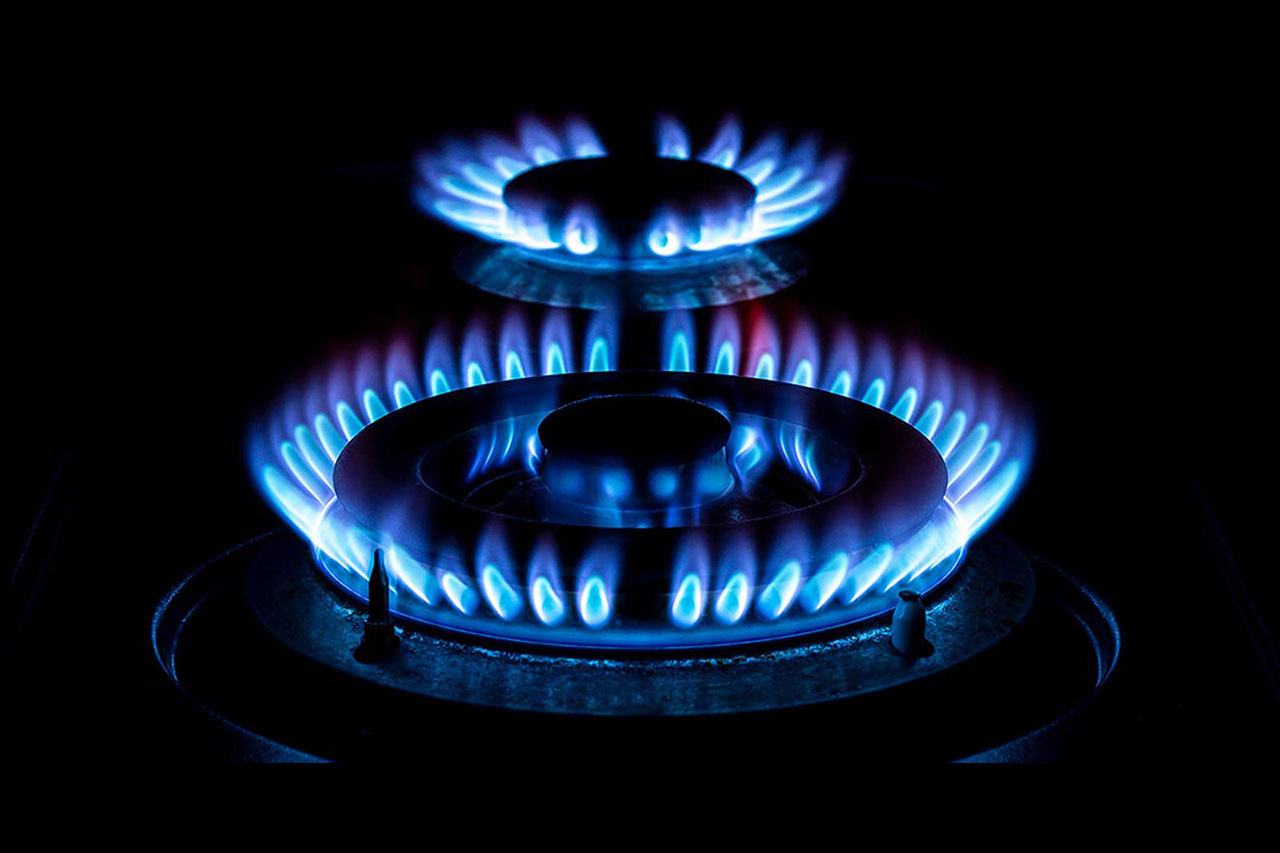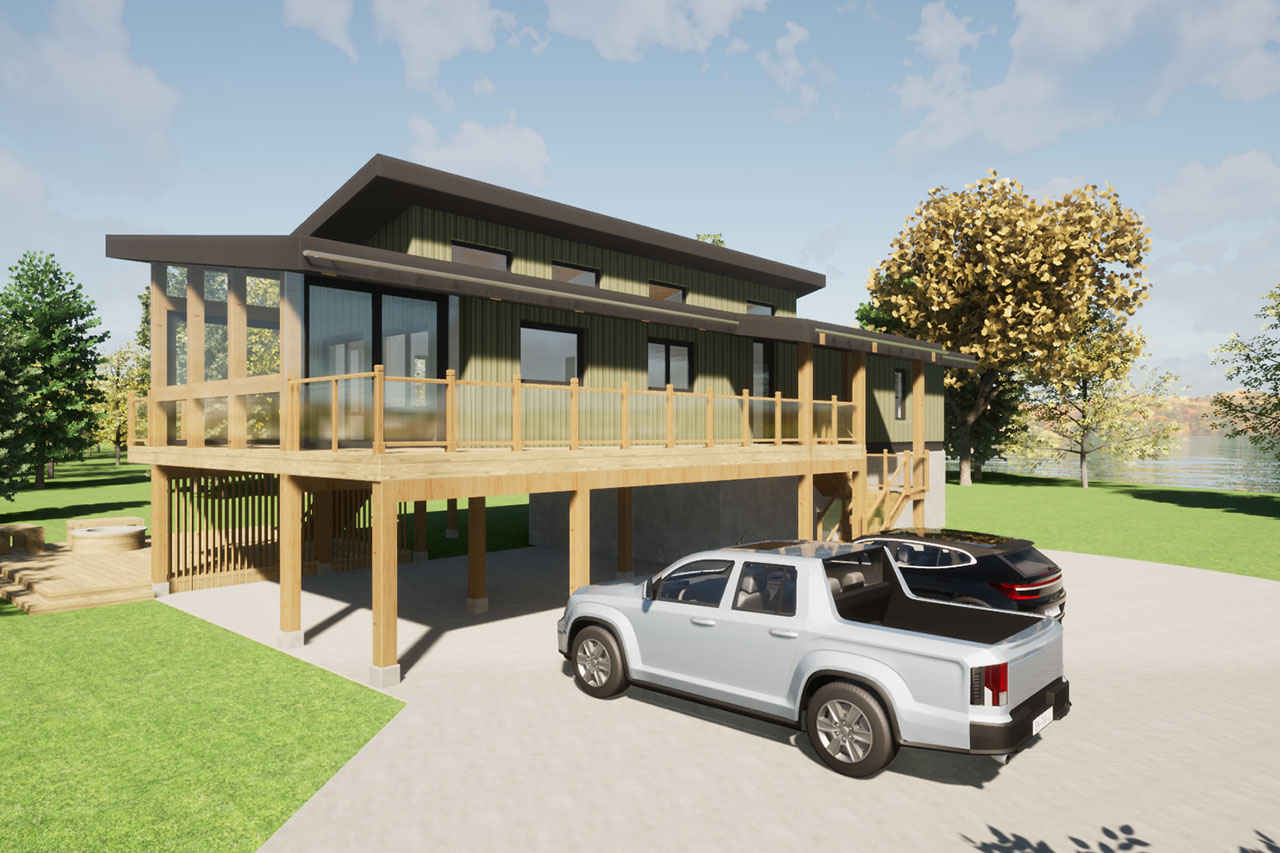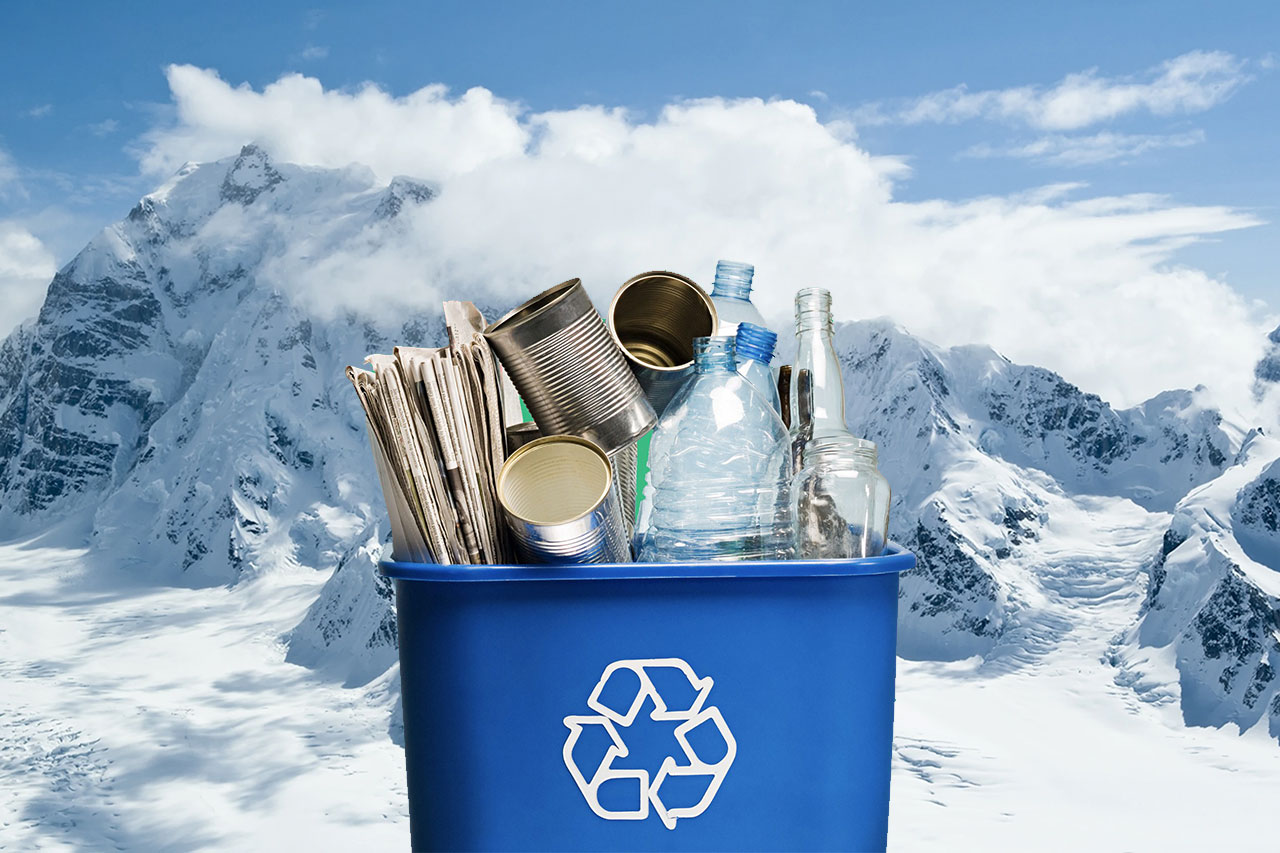What Exactly Is A Sustainable Home?
When people talk about sustainable, green, or net-zero homes, they are normally referring to a number of different facets that all make up your home’s environmental footprint. Many things go into making a home sustainable, including; the design of the home, the materials used, the ongoing impact of the environment to keep the home functioning, the lifespan of the home and the byproducts it creates once it is demolished.
“The overall lifespan of the building is key, you need to make sure that you design the home so that it doesn’t need a costly renovation down the road and you need to make sure that when the building gets demolished, how the bi-products are going to be disposed of or recycled”.
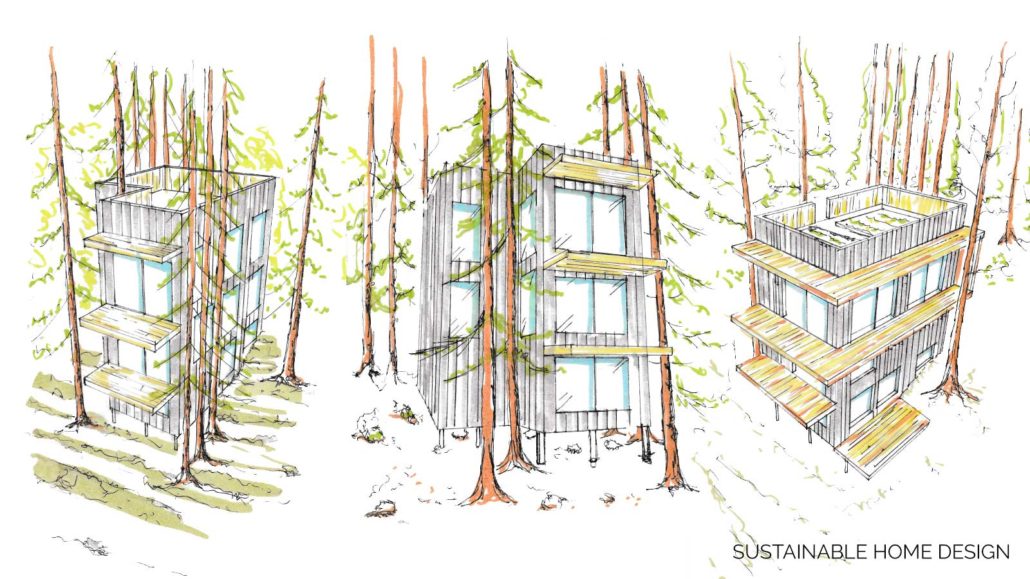
Design Of The Home
One of the most important features of a sustainable home, is the design of the home itself. You need to make sure that the home falls under Passive House criteria to make it net zero which basically just means you are putting in as much energy as the house is emitting. The first step is to make sure that you select a company that is well educated in sustainable home design. As there are many factors involved, it’s important to ensure that the designers are qualified in various aspects and can advise you accordingly to assure the best design for yourself and the environment. A sustainable home is built with low-impact, high performance materials that do not hurt the environment, they are energy efficient and are cheaper to run. Working with a company that knows what they are doing is key to getting it all right.
Reduced Energy Loss
Another important element is making sure that the house is not losing energy. All too often, a home is built that has drafts or poorly insulated and the house ends up costing a large sum of money to heat and cool. There are several ways to make sure your home is not an energy waster because it ends up hurting your pocketbook and the environment all at the same time.

Insulation
When choosing insulation, there are a lot of sustainable options out
there. The old fashion fiberglass insulation and spray foam just won’t
cut it anymore for Mother Nature so, we need to start using materials
that will make our homes not only environmentally friendly but healthier
as well. A few great options are cellulose, sheep’s wool,
cotton/denim, cork, and icynene.
When choosing insulation, there are a lot of sustainable options out there. The old fashion fiberglass insulation and spray foam just won’t cut it anymore for Mother Nature so, we need to start using materials that will make our homes not only environmentally friendly but healthier as well. A few great options are cellulose, sheep’s wool, cotton/denim, cork, and icynene.

“It is so important to make sure you have a sustainable design before you even start.”
Airtight Construction
Reducing thermal bridging is a big step towards a home being airtight. Each time you have a curve/corner in the wall, a wood stud is needed, these studs are more conductive than the insulation surrounding them. So even though the insulation reduces energy loss through the wall, it doesn’t stop energy loss across the thermal bridge. It is important to make sure you have a sustainable design before you even start because the more heat you lose through drafts, the more it costs to heat
and cool your home. It is essential to have a draft free building envelope so that the ventilation system is able to do its job correctly. In a Passive House, a Heat Recovery Ventilation system is used (HRV) which brings fresh air into the home and if it is not airtight, the ventilation is less reliable, and it is not possible to control air movement in and out of the home.
Solar Gain
A Passive House uses sunlight to help heat the home in the long winter months and it is also designed to block the sun in the warm summer months. In the northern hemisphere, homes are built southern facing with triple paned windows to capitalize on the solar gain and the suns heat energy. In the summer, passive houses rely on overhangs to keep the building cool. Simply by building this way, a house can reduce its heating and cooling bills by up to 90%.
Non-Renewable Resources
As we all know, fossil fuels are the biggest cause of climate change as when they burn, they release a large amount of carbon dioxide (a greenhouse gas) into the atmosphere. Greenhouse gases trap heat in our atmosphere, causing the globe to warm. A way to reduce carbon emissions is to not put “natural gas” into their homes. Natural (Fossil) gas is extracted from the earth’s core, in this process, companies drill boreholes deep into the earth and inject liquid into subterranean rock at very high pressure. This then forces open rock fissures and releases gas from within the rock or reservoirs below. Fracked gas is typically found fairly deep in the earth – much further down than the water table. But the boreholes carrying the gas back up to the surface travel straight through the water-bearing rocks, called aquifers, from which many of us get our water. The injected fracking fluid often contains dangerous chemicals that no one would want to drink – and if the borehole is not properly cased, those chemicals can escape into groundwater.
There are many cases of contaminated groundwater now that it is hard to turn a blind eye any longer to this process. Chemicals used for fracking can contaminate surface and groundwater with regulated toxins and chemicals known to cause cancer. Studies in the United States and Canada have shown that these chemicals can end up in drinking water and cause serious health effects. No wonder the number has jumped to 1 in 2 people will get cancer in their lifetime with practices like these.
Alternative Resources
There are a number of alternative methods that can be used instead of the burning of fossil gas. One option is to use electricity in the home. Induction stoves instead of gas or baseboard heaters instead of “natural” gas fireplaces. HRV systems are a healthier way to heat your home and the system is run off electricity and not gas.
Other alternatives include wind, solar, hydro, nuclear, propane, biodiesel, and geothermal energy. The biggest hurdle to a lot of the alternative resources is the cost, installing solar panels or a wind turbine is an expensive investment. The good news is, as it becomes more popular which it is, the cost will go down making it an affordable alternative to gas.
Create Less Waste
Embodied Carbon
Every product or material used in the construction of your home has a different environmental cost. The appliances in your home for example are constructed with copper or aluminum or various other metals that need to be mined out of the ground. They then need to be fabricated into panels or wires or nuts and bolts. Energy is used to pull the items out of the ground, refine them, and then shape them into useable parts. The energy used to extract the material for a product and to manufacture and transport it is known as its “embodied energy”.
There is also an environmental cost to either disposing or recycling the products once they are no longer needed. This all goes into the equation for embodied carbon which by definition is the greenhouse gas emissions associated with building construction, including extracting, transporting, manufacturing, and installing the materials, as well as the operational and end of life emissions associated with those materials.
Life Cycle Assessment
A life cycle assessment (LCA) is the full assessment of the environmental impacts of a material or product used in the home. It is a look at embodied energy each part of your home accounts for from cradle to grave, so the overall environmental cost of your home. Where it is practicable and possible, you should aim to build with materials that have a low level of embodied energy, such items like cellouse, straw, and hemp.
You also need to consider whether or not different parts of your house will be able to be recycled if and when your house reaches the end of its life cycle. There are new companies popping up all over the place like Unbuilders, that go in and unbuild a home and salvage almost everything including OldGrowth Lumber appliances, windows, doors, fixtures and cabinets. They de-nail the lumber and process it for transportation. The reclaimed wood is then shipped off site for reuse and remanufacturing. This process helps with the embodied carbon on the house as it is being reused and recycled so less trees need to be cut down to build more homes.
Another great way to cut embodied carbons is to use prefabricated panels. It is said that pre-fabbed homes cut embodied carbon by 45% which is a big number. It is because these types of homes require less carbon intensive products like concrete and steel and require less transportation, there is a panel company located right here in Whistler. There is less cut offs, less staffing required and less materials. The way of the future is pre-fabbed multi-family homes, they can help fight the climate crisis and help with the housing shortage.
Using Sustainable/ Eco-Friendly Products
When it comes to our homes, there are a number of Eco-friendly alternatives we can be using right now to reduce our carbon footprint while also saving you money in the long run-on bills.
- Energy efficient appliances
- Low flow toilets
- LED lighting
- Rainwater harvesting
- Programmable thermostats
- Eco or water-based paints
- As mentioned above, high performance windows, HVAC system, and alternatives like solar panels that can go on the roof.
The overall lifespan of the building is key, you need to make sure that you design the home so that it doesn’t need a costly renovation down the road and you need to make sure that when the building gets demolished, how the bi-products are going to be disposed of or recycled.
In Conclusion
The goal with a sustainable home is to use less energy which in turn reduces your energy consumption and overall emissions back into the environment. There are so many factors to think about now with building a sustainable home that would have been missed in years past like embodied carbon and the use of “natural gas” because people think it is good because it has the word natural in it.
At GNAR Inc we are a sustainable home design company that has certified Passive House designers on staff. We are able to take your ideas, thoughts and dreams and design something that you can call home at the same time as keeping Mother Nature happy. Let us know how we can help! Call 604.962.1611 or email admin@gnarinc.com.
